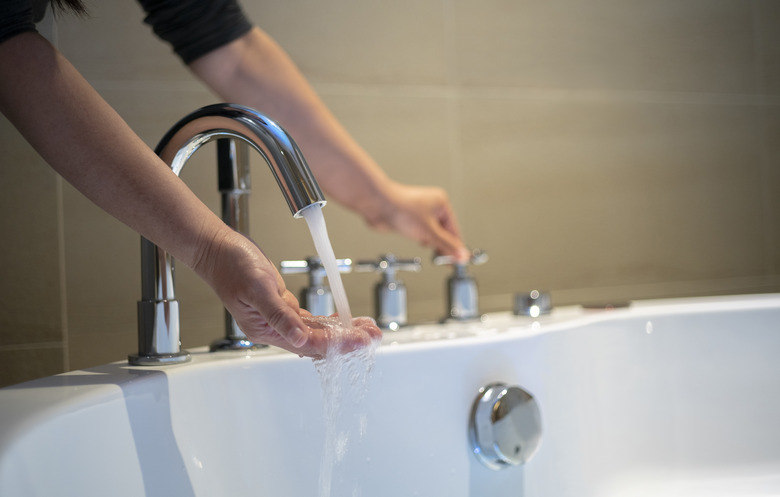How Does An Overflow Drain On A Bathtub Work?
We may receive a commission on purchases made from links.
Overflow drains on bathtubs help avoid an expensive and messy disaster. Many people turn on their bathwater and then walk away while the tub fills. In most cases, they end up back in the bathroom in plenty of time to turn off the water before it overflows the sides, but every once in a while, a distraction happens and the bathtub is momentarily forgotten.
Without an overflow drain, you might rush into the bathroom to find water spilling onto the bathroom floor, soaking everything in sight. After the water is finally sopped up, you might still face damage to your baseboards, subfloor or vanity. Mold can also grow in any hidden areas that remain damp.
However, with a well-functioning overflow drain, you would walk into the bathroom to find water pouring through a hole in the side of the tub. Don't worry — the water is completely contained and won't damage anything under or around the tub. You can breathe a sigh of relief.
Tip
The overflow drain on a bathtub prevents a bathroom flood by passively draining water once it reaches a certain level in the tub. The overflow drain pipe connects to the main tub drain pipe to dispose of the extra water.
Where the Overflow Water Goes
Where the Overflow Water Goes
Water that enters the tub overflow hole immediately drops down a pipe. This same pipe connects to the tub floor drain. In other words, the tub overflow water ultimately travels the same path as the water that normally drains from your tub.
Tub overflow drains differ slightly from sink overflow drains. Sink overflow drains consist of a hollow layer in the sink material, which allows water to flow through the holes, down the side of the basin and into the main drain pipe. Tub overflows connect directly to a pipe rather than having an integrated drain layer in the tub material.
Overflow Drains Can Still Overflow
Overflow Drains Can Still Overflow
It's important not to be misled by the name "overflow drain." Overflow drains aren't invincible and can still overflow themselves. Because they drain directly into the tub's main drain pipe, any clogs affecting the main drain pipe will affect the overflow drain too. However, clogs located in the first few inches of the tub floor drain should not affect the overflow drain because the shared pipe remains clear.
Therefore, do not make the mistake of relying on the overflow drain to assist with water control in the event of a clogged drain. For example, if a drain has a deep clog and water fills the tub when you take a shower, the overflow drain will not function properly. Water will continue to fill the tub beyond the overflow drain, and the bathroom could flood if the shower is not turned off or a leak is not fixed.
Adjusting an Overflow Drain
Adjusting an Overflow Drain
Sometimes, the bathtub overflow drain is positioned too low in the tub for a pleasant soaking experience. You can give yourself a couple more inches of water by installing an overflow drain cover. These covers feature a hole in one side to allow the water to exit the overflow hole in the tub.
To take advantage of your tub's normal overflow height, position the cover's hole in the 6:00 position. To maximize the tub's overflow, position the hole in the 12:00 position. The 3:00 or 9:00 positions serve as a middle ground. The cover should easily rotate by hand so that everyone in the house can set their ideal bathwater depth while still preventing a flood.
